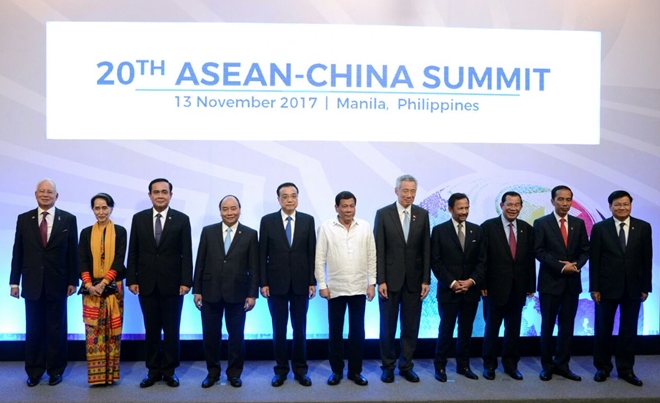ASEAN, China to make East Sea region more peaceful, stable
- Diplomat: Vietnam – active, responsible member of ASEAN
- PM successfully wraps up trip to ASEAN Summit in Philippines
- ASEAN, China agree to protect marine environment in East Sea
Maritime security and safety in the East Sea have been major agenda at regional forums like ASEAN and top priorities of ASEAN’s foreign policy over the last 5 decades.
 |
| ASEAN, China to make East Sea region more peaceful, stable |
At this week’s Summit in the Philippines, ASEAN leaders reaffirmed their commitment to maintaining and promoting peace, security, and stability; peacefully settling disputes; respecting diplomatic and legal processes; abiding by international law, including the 1982 UN Convention on the Law of the Sea; fully implementing the Declaration on the Conduct of Parties in the East Sea; and promptly finalizing the Code of Conduct in the East Sea.
Strategic maritime area
The East Sea has been a hot topic of debate at regional forums because of growing tensions, unilateral, groundless claims, and grave violations of marine environment.
In the face of increasing threats to peace, security, and stability in the region, the leaders agreed on the importance of greater unity and consensus, more consultation, and maintaining an environment conducive to economic growth and a stable life for all people in the region.
ASEAN and China adopted the Declaration on a Decade of Coastal and Marine Environmental Protection until 2027, which creates a basis for protecting the East Sea’s ecology and biodiversity despite tensions and disputes.
The two sides also agreed to start negotiations on the Code of Conduct in the East Sea, a legally binding document that will prevent conflicts and settle disputes. COC negotiations are to begin next year.
Upholding peaceful co-existence principle
ASEAN’s major achievement has been maintaining peace and stability in the region. ASEAN has served as a mechanism to regulate and minimize bilateral differences.
On ASEAN’s 50th founding anniversary, Secretary General Le Luong Minh highlighted ASEAN’s efforts to promote a rule-based regional structure in which all member countries, big or small, co-exist and respect national independence, sovereignty, and territorial integrity under international law.
ASEAN has produced important tools to uphold the principle of peaceful co-existence and peaceful settlement of disputes between member countries and with outsiders.
The tools including the Treaty on Amity and Cooperation and the Declaration on the Conduct of Parties in the East Sea are an important legal basis for preventing conflicts and building trust, which has been eroded by unilateral acts that violate the principles of peace, stability, dialogue, and cooperation.
ASEAN has promoted consultation and unity by organizing regular meetings between regional leaders and officials.
ASEAN and China’s agreement to activate COC negotiations reflects ASEAN’s unity and its tireless efforts to promote peace, trust, and cooperation to make the East Sea a region of peace, stability, and development.

